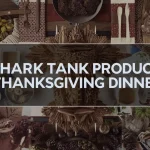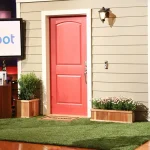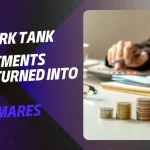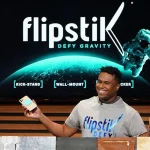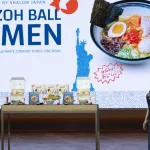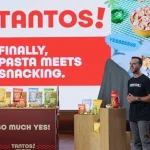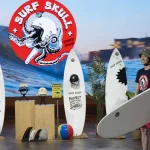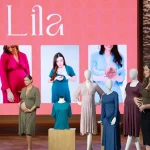
At times, one of the greatest ideas comes from places where you least expected it. That is what happened when a fifth-grade girl stepped onto the stage of Shark Tank, pitching a redesigned baby spoon and humbly walking out with a deal.
The founder of the brand, Baby Toon, Cassidy Crowley, manufactured the product from soft silicone material, especially designed for infants.
Let’s have a closer look at how The Baby Toon transformed a childhood concern into a serious business.
The Genius Behind the Baby Toon
The startup Baby Toon was not started by a high-profile incubator; instead, it commenced in elementary school. Cassidy Crowley, a ten-year-old, came up with the idea of a Baby spoon.
The story behind her creation was when Cassidy noticed that her baby sister used a hard plastic spoon. The rigid and long design of the spoon can pose a gagging risk for infants. Thus, the journey of Baby Toon started off with a simple question: why not design a spoon that is soft, safe, and short?
Rather than dismissing the idea, she pursued it. The very first prototype was developed from FDA-grade silicone material, with a short neck. The ergonomic shape and gentle material doubled the functionality of her product as a teether, a clever feature that attracted parents.
Hence, the invention that began as a science fair project transformed into a real product, further proving that sometimes all we require is a simple solution.
The Baby Toon Shark Tank Pitch
Cassidy appeared on the stage of Shark Tank Season 11 Episode 1. She pitched her brand, The Baby Toon, along with her mother.
Cassidy was seeking $50,000 in exchange for a 50% equity in her company, further valuing the brand at $100K.
When Cassidy began speaking on the Tank, she had the clarity that she was not there as a marketing gimmick. She took the plunge and shared with the Sharks that her business idea came from a real problem she observed at her house.
Additionally, she delineated the fact that the product was fully manufactured in America, using a certified molding facility to meet the industry safety standards.
As the pitch continued, the Sharks were visibly impressed. A few of them joked about how poised and professional she was, despite being just a child.
One of the most memorable moments came when, after hearing her pitch, one Shark let Cassidy sit in his chair and told her she was the real “Shark” that day.
In the end, Lori Greiner, the longtime “Queen of QVC” and a Shark known for consumer-product instincts, offered exactly what Cassidy asked for: $50,000 for 50% equity. Without hesitation, Cassidy accepted. The deal was done.
It was a powerful moment: a fifth grader out-pitching seasoned entrepreneurs and winning on her own merit.
Why Her Pitch Was Effective
Let’s look at some of the reasons that made her pitch one of the most interesting ones in the history of Shark Tank.
- Real problem: This wasn’t a generic “toy idea.” It was born out of concern for a baby sister. The motivation was personal and sincere.
- Thoughtful design & safety: The Baby Toon wasn’t just soft, it had a safety-first design, addressing real risks many parents face.
- Ready-to-manufacture from day one: Cassidy and her team didn’t come with a sketch; they had a prototype, a manufacturing plan, and compliance with safety standards. That was rare, especially from such a young founder.
- Emotional resonance: Many parents have worried about baby spoons, teething, and safety during feeding.
What Happened After the Shark Tank Appearance: From Spoon to Success
The deal with Lori Greiner wasn’t just for show. According to updates, The Baby Toon went on to establish itself as a viable, active business. Here are some of the key milestones:
- The Baby Toon remained in business post-Shark Tank.
- It entered into a licensing deal with a larger baby-product company.
- As of recent reports, the Baby Toon’s products are sold on major channels like Amazon and via retail distribution. This was a significant step up from early DIY sales.
- The company’s estimated annual revenue is now around $1 million, a substantial growth from its pre-show sales.
- The product’s affordability and safety features kept it relevant, and many parents praised its dual function as a teether, ergonomic design, and baby-friendly material in reviews.
In short, Baby Toon didn’t fade after the show. It scaled, got real distribution, and continues to serve its niche, all thanks to a smart invention backed by clever execution.
What This Story Means: Beyond Baby Spoons
The Baby Toon’s journey offers lessons not just for parents, but for aspiring entrepreneurs of any age.
1. Great Ideas Don’t Need to Come From Adults
Innovation isn’t age-restricted. Cassidy proves that children, when observant and motivated, can build products good enough to compete in major marketplaces.
2. Solve a Real Problem Rooted in Everyday Life
The Baby Toon addressed a genuine concern: child safety during feeding. Thus, it’s significant enough that your product solves a widespread problem, which compels the customers.
3. Heart and Empathy Can Be Powerful Motivators
Sometimes, emotional authenticity matters more than slick marketing. It builds trust, relatability, and connection.
4. Execution Matters as Much as the Idea
Cassidy didn’t present a sketch; she had a working silicone prototype. She knew about manufacturing, safety compliance, and baby food logistics. That level of readiness helped earn the Sharks’ trust.
Takeaway
Cassidy’s story highlights that successful companies did not emerge from tech hubs, incubators, and boardrooms. She did not just outsmart the Sharks; rather, she showcased that anything is possible with empathy, courage, and creativity.



